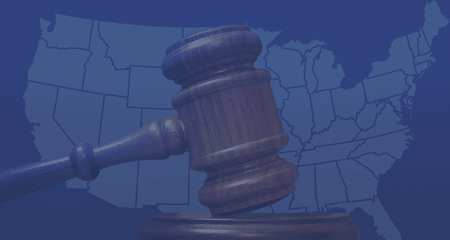How to Avoid the Headlines and Prevent Cyber Attacks in Financial Services
Recently, a major #cyberattack was directed on Kaseya , a remote monitoring and management software company based in Miami. Hackers demanded millions of dollars in ransom directly from several of the company’s customers and indirectly affected several cloud service providers and their customers.
The Kaseya incident is just one of several recent, similar #ransomware attacks affecting companies across industries and geographies. Recently the U.S. federal administration issued an executive order to strengthen the country’s cybersecurity infrastructure and oversight in light of the Colonial Pipeline ransomware attack and last year’s SolarWinds cybersecurity breach. The order directly affects those doing business with the federal government. However, it should also serve to elevate the threat of cybersecurity issues among private sector firms engaged in critical infrastructure industries including financial services, healthcare and energy.
#Cybersecurity is the single largest risk facing organizations of all sizes in the financial services industry. Small and midsized firms are especially vulnerable because they are often unequipped to manage the full spectrum of potential security threats across devices, networks, users and vendors. In a business where confidential financial information is being shared and processed, it is paramount to have sufficient safeguards in place to ensure the protection of investor data.
Cybersecurity gaps in financial services
The pandemic significantly changed the way many businesses operate. Dispersed workforces required all types of organizations to abruptly rethink their communications tools and oversight processes. And with a dispersed workforce comes an environment that is ripe for fraud, nefarious behavior and the increased likelihood of cybersecurity risks. Financial firms have had to move quickly to address a number of vulnerabilities:
- Employees using personal devices with no malware detection, insufficient backups or encryption
- Parents sharing devices with children who may be attending school remotely
- Connections to corporate servers and resources from unsecure (or even compromised) devices, sharing sensitive data from unsecured home wifi networks
- Files stored on unprotected drives and sensitive information on display for other people in the home or a shared workspace
Unfortunately, many organizations are not prepared to protect their employees and their devices from cyber criminals in a remote work environment.
How to strengthen cybersecurity protocols
Be diligent when choosing software partners These large-scale cybersecurity incidents should serve as a strong reminder to entrust your most sensitive information only with those cloud services providers that treat information security and protection as a core capability. These organizations have the expertise, demonstrated adherence to industry standards (supported by third-party attestations), and proven practices that can be verified.
Learn from high-profile cases Regulated organizations should use these events as cautionary tales to strengthen cybersecurity and compliance protocols with unified solutions. Proactively preserving and monitoring communications and employing automated security protections can go a long way toward saving your organization from having to do damage control.
Use a cybersecurity compliance automation solution Regulated organizations can get ahead of cyber issues by using a unified platform to monitor and address their cybersecurity risk posture across multiple threat vectors. Entreda Unify is an easy-to-use dashboard that provides insight into organizations’ vulnerabilities across devices, networks, users and vendors, and helps customers mitigate risk and strengthen areas of need. Our built-in remediation applications include:
- Remote desktop: Remotely access any desktop securely
- Auto VPN: Securely browse the internet from anywhere
- Data leakage monitoring: Monitor data leakage to any USB and cloud drive
- Password policy: Enforce password complexity policies on any device
- Anti-virus & anti-malware: Actively manage anti-virus status on any device
- Device encryption: Actively manage whole disk encryption status on any device
We originally designed Unify to address the National Institute of Standards and Technology (#NIST) Cybersecurity Framework, with compliance features and reporting that organizations need to fully satisfy their regulatory and security requirements.
Train your staff, and then train some more Once you have the right people and technology in place to combat cybersecurity issues, we recommend developing a thorough, regularly updated training plan for employees. Here are a few steps to get you started:
- First, engage in real-world, table-top exercises. Table-top exercises using real-world, use case-based training scenarios are the best for organizations to ensure proper preparation. Beware of check-the-box training solutions.
- Second, provide remediation and training in real time, immediately upon detecting gaps in a user’s cybersecurity posture. Timing and context are everything with training – If firms wait six months after an incident or near miss, the training loses relevance and effectiveness. You want cybersecurity training to take hold and lead to changes in behavior.
- Third, train users in specific measures and tactics that can combat or significantly mitigate the impact of ransomware attacks. For example, backups are crucial because hackers can’t hold data that exists elsewhere for ransom. Setting automatic reminders to all users to periodically back up data is a good approach to reinforce this strategy.
- Always purchase cyber insurance that actually covers ransomware. These policies should include paying the ransom if needed, in addition to coverage for loss of revenue, public relations costs and legal fees.
Make your training plans part of your company’s onboarding procedures and keep people engaged as threats continue to evolve.
Hackers will only get more sophisticated as they find ways to circumvent companies that have unintended cybersecurity gaps. Not only can these events cause financial and legal issues, but they are also damaging for a company’s business reputation. Take it from Benjamin Franklin, “an ounce of prevention is worth a pound of cure.”
“I really appreciate Entreda’s universal application of policy and that I can see approved firewalls, if employees have changed their password in the last 90 days, and more, in one place. It gives me peace of mind that I don’t have to double-check everything myself.” – Mark Kerwood, Chief Financial Officer & Investment Strategist at Trail Ridge Wealth Management
Share this post!
Smarsh Blog
Our internal subject matter experts and our network of external industry experts are featured with insights into the technology and industry trends that affect your electronic communications compliance initiatives. Sign up to benefit from their deep understanding, tips and best practices regarding how your company can manage compliance risk while unlocking the business value of your communications data.
Ready to enable compliant productivity?
Join the 6,500+ customers using Smarsh to drive their business forward.




Subscribe to the Smarsh Blog Digest
Subscribe to receive a monthly digest of articles exploring regulatory updates, news, trends and best practices in electronic communications capture and archiving.
Smarsh handles information you submit to Smarsh in accordance with its Privacy Policy. By clicking "submit", you consent to Smarsh processing your information and storing it in accordance with the Privacy Policy and agree to receive communications from Smarsh and its third-party partners regarding products and services that may be of interest to you. You may withdraw your consent at any time by emailing privacy@smarsh.com.
FOLLOW US